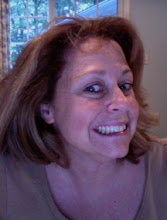
Letters to a Young Teacher, published in 2007, restates all of Kozol's messages, interweaving his thoughts and recollections into correspondence with a new, idealistic teacher in the Boston schools. Although I agree with many of Kozol's opinions, I still found the letter format to be a bit heavy-handed. Even though in writing to "Francesca" he is "preaching to the choir," the "letters" read more like "lectures." This book seems to be just another platform for Kozol's fervent views about public education that are evident in this quote:
The children of the suburbs learn to think and to interrogate reality; the inner-city kids meanwhile are trained for nonreflective acquiescence. One race and social class is educated for the exploration of ideas and for political sagacity and future economic power; the other is prepared for intellectual subordination. The longer this goes on, Francesca, I'm afraid the vast divide that we already see within American society is going to grow wider.
I did enjoy Kozol's personal anecdotes and the detailed notes section at the back of the book, and I definitely respect his passion and conviction. The following passage describing his visit to an out-of-control New York City high school lunchroom especially resonated with me. Of all a teacher’s various roles, none is worse than the dreaded lunch duty.
Visitors from outside these neighborhoods who witness confrontations like this often make the unkind observation that "these students act like animals." But if you treat these kids like animals, herding them along for squalid feedings like so many cattle rather than providing them with even minimal civility, it's not surprising to me that they act accordingly.
My absolute favorite part of this book however was Kozol's description of the type of teacher he recruits. I wholeheartedly agree!
As you know, Francesca, I recruit young teachers every time I have the chance when I speak at colleges and universities. I never recruit people who seem docile, flat-natured, and boring. If they're boring to a grown-up, it seems likely they'll be boring to a class of children too. But if they're dynamic and engaging individuals, if they're in love with children and in love with language and like to read good books and poetry and talk about them with excitement, and if their heads seem thoroughly screwed on, so I feel assured about their personal stability—in other words, if they're the kind of person you'd be eager to have as an intern in your class— I always say, "Come on! Wrap up the courses that you need in order to be certified. Then bring your interesting personality, your energy, your love of beauty, and the academic benefits of your good education into the schools where people with your gifts are needed most."






 elementary lessons. A teaching guide is located on the prolific
elementary lessons. A teaching guide is located on the prolific 








